Royal Antique is privileged to present this elegant mantel clock, a true collector's piece, embodying the refined artistry and aesthetic power of the French Empire period. It stands out with its beautifully sculpted red Griotte marble case, enhanced by finely chiseled gilt bronze mounts.
Movement and Dial:
Signed Dial: The enameled white dial is proudly signed "Lépine à Paris," attesting to its distinguished origin from one of the most renowned clockmaking families of that era. It clearly displays Roman numerals for the hours and is marked by elegant blued steel hands. The "Lépine" signature is synonymous with precision and innovation in French horology.
Mechanical Movement: The eight-day mechanical movement, featuring a wire suspension pendulum, strikes the hours and half-hours on a bell. The pendulum itself is a sumptuous decorative element, showcasing a finely crafted gilt bronze sunburst motif, an emblematic symbol of the Empire.
Serviced and Preserved: The clock has recently been cleaned and serviced by a professional watchmaker specializing in museum restoration in Poland, ensuring its continued functionality and long-term preservation. It is delivered complete with its pendulum, winding key, and bell.
Case Design and Materials:
Architectural Portico Form: The clock adopts the classical architectural form of a portico, with a central circular clock face suspended between two imposing rectangular marble columns. The base is also a substantial rectangular marble plinth, giving the ensemble a monumental and balanced appearance.
Red Griotte and White Marble: The case is predominantly crafted from lustrous red Griotte marble, celebrated for its rich red hues and subtle white veins. This striking marble is contrasted by white marble accents on the bases of the columns, enhancing the classical elegance of the composition.
Gilt Bronze Mounts: The entire piece is superbly adorned with finely chiseled gilt bronze mounts that highlight its architectural structure and decorative elements. These include elegant garlands of foliage and floral motifs on the columns, a decorative frieze above the dial, and a stylized bird, often a dove or eagle, crowning the top of the clock, adding a touch of imperial refinement.
Historical Context and Appeal:
This mantel clock is a magnificent example of early 19th-century French horology and decorative arts, fusing precision engineering with an imperial aesthetic. It embodies the era's taste for Neoclassicism, references to Roman and Egyptian antiquity, and a certain monumental grandeur, all typical of the Empire style. Such pieces adorned the interiors of imperial residences and the high bourgeoisie, symbolizing power, taste, and erudition.
It would make a superb addition to any discerning collection of antique timepieces or Empire period decorative arts, offering not only a time-telling function but also a decorative presence of rare historical and artistic distinction.




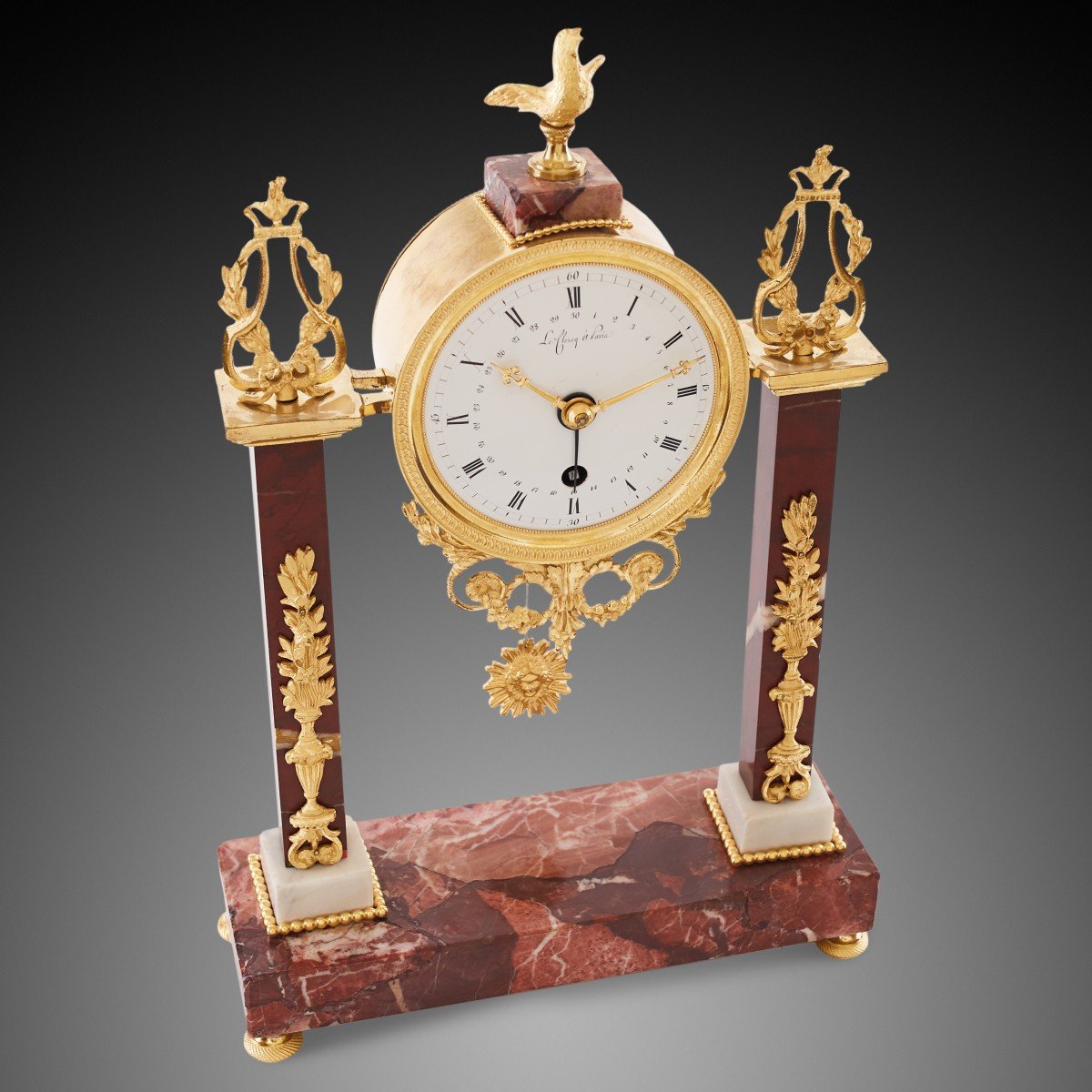

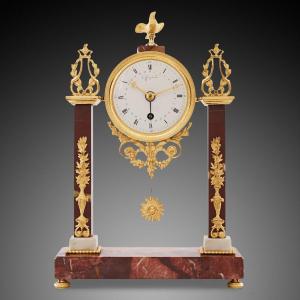




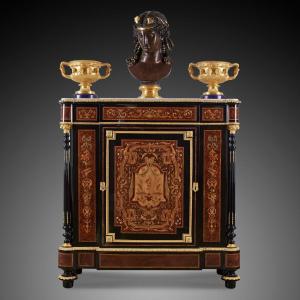


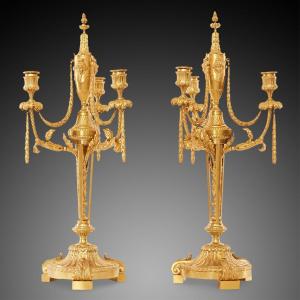



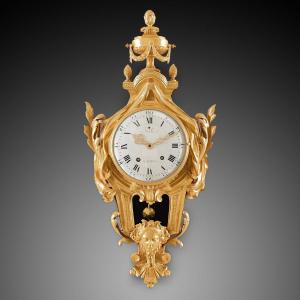
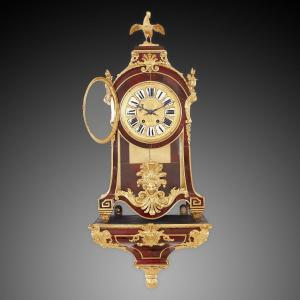



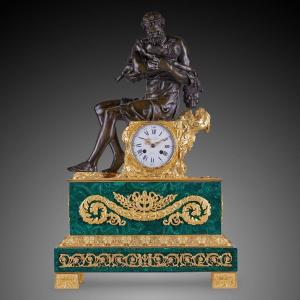










 Le Magazine de PROANTIC
Le Magazine de PROANTIC TRÉSORS Magazine
TRÉSORS Magazine Rivista Artiquariato
Rivista Artiquariato